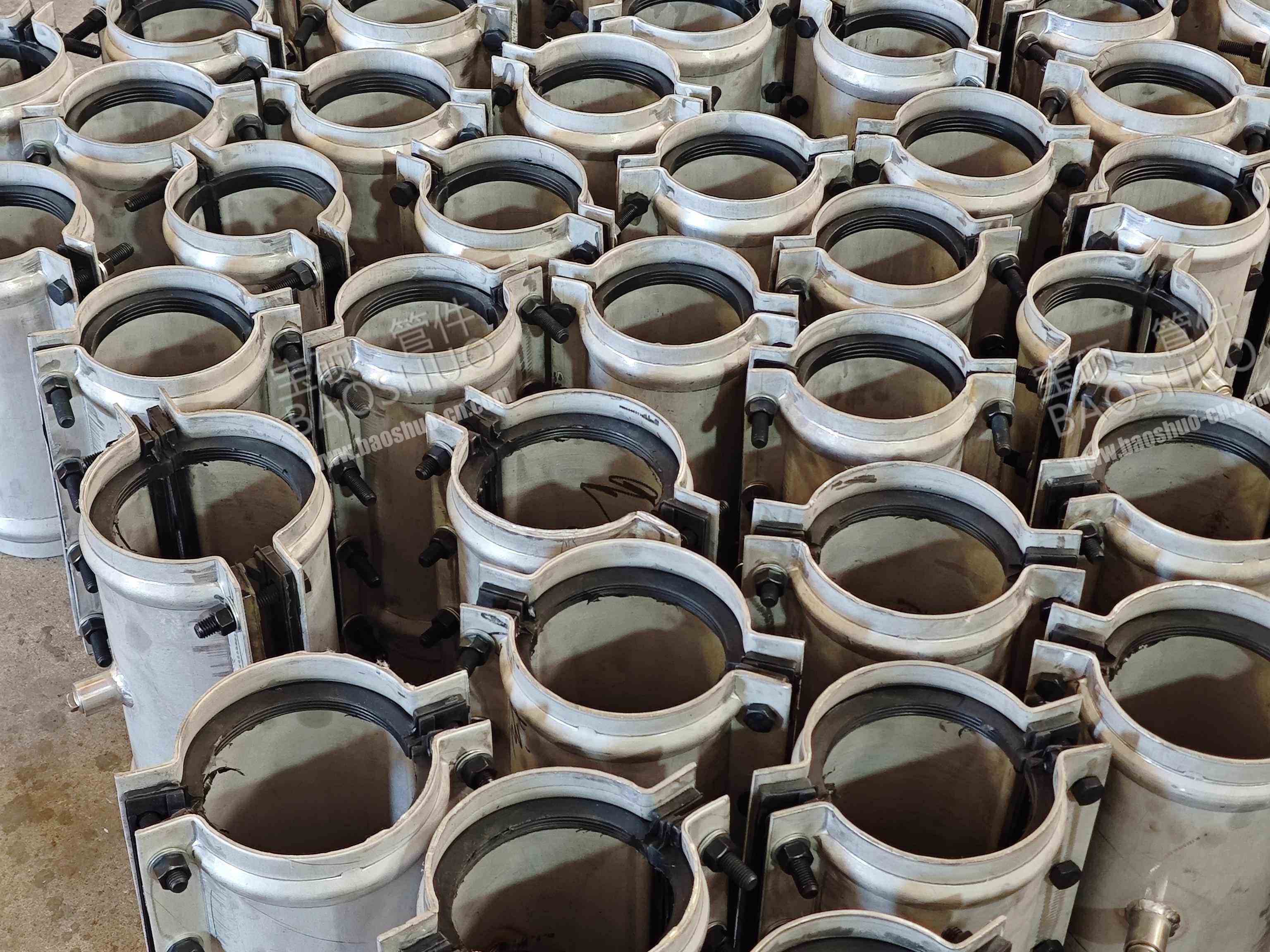PE pipe hot melt leaks, which connection method generally leaks more, what are the advantages of using leak repair clamps
PE pipe hot melt leaks, which connection method generally leaks more, what are the advantages of using leak repair clamps
🧿1. PE pipe leaks during hot-melt fusion: Which connection method generally leaks the most?
Theoretically, the potential leakage risk of electric fusion (socket-and-spigot) is relatively higher than that of butt fusion, especially if construction quality control is not strict.
The following explains the two connection methods and their common causes of leakage in detail:
1. Electric fusion (socket-and-spigot)
Principle: The PE pipe is inserted into a dedicated electric fusion fitting (such as a sleeve, elbow, or tee). A resistance wire on the inner wall of the fitting heats the pipe, melting the fitting and the outer wall of the pipe together.
Why problems are more likely to occur:
Extreme cleanliness requirements: The oxide layer, dust, and oil on the insertion end of the pipe must be thoroughly scraped off. Otherwise, an insulating layer will form, resulting in uneven heating and poor welds.
Insufficient cooling time: Sufficient natural cooling time is required after welding. Premature movement or pressure application will disrupt the reconnection of the molecular chains, causing internal leakage.
Highly dependent on welding parameters: The welder is heavily reliant on automatically outputting the correct voltage and timing. Equipment failure or incorrect parameter settings (such as unstable voltage) can lead to welding failure.
Human factors have a significant impact: Operator errors such as improper insertion, insufficient or excessive scraping length, and excessive gaps between the pipe and fitting can directly lead to leaks.
2. Butt Fusion
Principle: The ends of two pipe sections are simultaneously heated to a molten state using a heating plate. The heating plate is quickly removed, and pressure is applied to sew the two ends together. After cooling, they form a single piece.
Reasons for Relatively Reliable:
High Joint Strength: The resulting weld strength can theoretically approach the strength of the pipe itself.
Visual and Controllable Process: The "flange" formed during welding is an important visual indicator of weld quality. Operators can initially assess quality by observing the uniformity of the flange.
However, leaks can occur. The main causes include:
Improper heating plate temperature: Too high or too low.
Incorrect heat absorption/cooling time: Insufficient or excessive.
Inaccurate butt fusion pressure: Excessive pressure creates a "false flange," while insufficient pressure results in incomplete fusion.
Uneven/Unclean End Faces: Presence of impurities or water.
Conclusion: While electric fusion joints are more convenient and flexible (especially in confined spaces), they are more sensitive to cleanliness, cooling processes, and equipment parameters. Therefore, if the construction is not standardized, the probability of leakage is higher than with hot-melt butt welding, which has more standardized procedures and more visible weld quality.
🧿 2. What are the advantages of using a repair joint?
When a PE pipe leaks, using a repair joint (also called a half joint or pipe patch) is a very efficient and reliable repair method. Its advantages are significant:
1. Fast and efficient, requiring only a short or no water outage.
Biggest advantage: Most repair joints are designed to plug leaks under pressure. They can be installed without completely shutting off the pipe, only reducing the pressure, significantly minimizing the impact and financial losses on users. This is crucial for systems such as municipal water supply and fire protection pipelines, where prolonged water outages are unavoidable.
2. Easy to operate, no special equipment required
Compared to hot melt repairs, which require a hot melt welder, power source, and specialized welders, emergency repair joints typically require only simple tools (such as a wrench) and can be operated by ordinary workers after brief training, significantly reducing repair time and labor costs.
3. Safe, reliable, and with excellent sealing
Modern emergency repair joints typically utilize a dual-ring design (e.g., O-rings) made of corrosion-resistant and age-resistant rubber (e.g., EPDM, NBR) to provide a long-lasting, effective seal. The metal casing (ductile iron or stainless steel) provides strong mechanical strength and pressure resistance.
4. High adaptability and a wide range of applications
Repairs a wide range of damage types, including cracks, holes, and joint leaks (whether caused by electric fusion or butt-joint joints).
Compatible with various pipe materials: not only PE pipes, but also steel pipes, cast iron pipes, PVC pipes, and more.
A variety of sizes and styles are available, including straight pipe repairs, tee repairs, and socket repairs, to address a variety of complex leak situations.
5. Low requirements for the construction environment
Hot-melt welding requires a dry, draft-free environment, while the repair joint can operate in slightly stagnant or damp pits, making it more adaptable.
The housing is typically made of metals such as ductile iron and carbon steel, which are corrosion-resistant and high-strength. It can last the same life as the original pipe, eliminating the need for frequent repairs. Baoshuo brand carbon steel half joints are available in a variety of rubber materials, including NBR, EPDM, FKM, and silicone rubber. The half joint body is available in Q235 carbon steel and 304 and 316L stainless steel.
The following are Baoshuo brand oil-resistant pipe repair clamps, high-temperature-resistant pipe repair clamps, acid- and alkali-resistant pipe repair clamps, stainless steel pipe repair clamps, high-pressure-resistant pipe repair clamps, and large-diameter pipe repair clamps.
🧿Summary and Recommendations
Cause of Leakage: Mostly due to human error, requiring enhanced welder training and process supervision.
Remediation Method: Electric fusion repair joints offer the best balance of reliability, efficiency, and cost-effectiveness.
Key Operational Key: Regardless of the method used, thoroughly cleaning the pipe surface (scraping off the oxide layer) and strictly adhering to the welding parameters specified in the product manual are crucial for a successful repair.
Therefore, for emergency situations such as leaks from PE pipe hot-melt joints, the use of repair joints is generally the preferred, efficient, cost-effective, and reliable repair solution. It minimizes water outage time and social impact, making it a mainstream method for municipal and emergency repairs.















